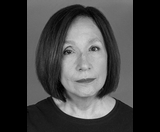PICTURE CATEGORIES
- APPARITIONS
- AROUND BUILDINGS
- AROUND SCULPTURES
- BEACH
- BLOCKED PERSPECTIVES
- BLUR
- BLUR UNDREGROUND
- CAGED
- CITY GARDENS
- CITY STREET ART
- COLOUR UNDERGROUND
- CUT OFF
- CUT OFF AND OTHERS
- DISCARDED
- DISTRESSED STREET ART
- END OF HORSE-DRAWN CARRIAGES
- FACADES IN BLACK AND WHITE
- FACADES IN COLOUR
- GRAFFITI IN THE STREETS
- GRAFFITI IN THE STREETS 2
- GRAFFITI ODDS AND ENDS
- GRAFFITI ON THE PAVEMENT
- GRAFFITI ON THE WALLS
- GRAFFITI ON THE WALLS 2
- GRAFFITI ON THE WALLS 3
- GRAFFITI ON THE WALLS 4
- IN LOVING MEMORY
- IN THE DARK
- IN THE LIGHT
- INSIDE ART PLACES
- INSIDE EMPTINESS
- LOOKING OUTSIDE ART PLACES
- MOTORIZED VEHICLES
- MURALS IN THE STREETS
- NATURE SCENES
- NAVIGATING OBSTACLES
- ONE WAY
- ORANGE OBSTACLES
- PANDEMIC TIMES
- PARADING
- PARKS & RECREATION
- PASSING BY
- PASSING BY ILLUMINATIONS
- PAVEMENT STREET ART
- PEDESTRIAN CROSSINGS
- PORTRAITS IN THE STREETS
- PUDDLED STREETS
- REDBALL PROJECT IN MONTREAL
- -SCAPES
- SIDEWALK ANGLES
- SIDEWALK LEVEL
- SIDEWALK PERSPECTIVES
- SIDEWALK SALES
- SIDEWALK SHADOWS
- SIDEWALK TREE SHADOWS
- SKY ANGELS
- SKY PUDDLES
- SOME ARCHITECTURE
- STREET ENTERTAINMENT
- STREET FAIR WANDERERS
- STREET LINES
- STREET LINES AND SHADOWS
- STREET SHADOWS
- STREET TREE SHADOWS
- STREET SIGNS
- SUBURBAN LAVENDER
- TAGGING OVERLOAD
- TAGGING OVERLOAD 2
- TOWERING TOWERS
- UNDER THE WIRED SKY
- UNDERGROUND PASSAGES
- UNDERGROUND PLATFORM
- UNDERGROUND SPEEDING STILLNESS
- VACANTS LOTS
- VIEWFINDER ABSTRACTS
- WALKABOUT OBSTACLES
- WALKABOUT SIGNALISATION
- WINDOW DISPLAYS
- XMAS TIME
- ZOMBIES
- ZOO
- ODDS & ENDS
About me
Montreal, my home town, has been my principal canvas since I started practising street photography in autumn 1978. while studying Fine Arts at Concordia University. After graduating in 1981, life circumstances were such that I didn’t try to earn a living as an artist. I chose instead to pursue other social and professional interests in labour relations. Nevertheless, I kept up with photography as a creative outlet. For the longest time, I only took black and white photographs. I had a little darkroom set up wherever I happened to live. In 1994, I took a course to learn how to develop colour photographs. In 2006, I adopted digital photography and never looked back.
My photography is not about Montreal per se. I aim to capture scenes that could be from any urban centre in North American, let’s say. No matter where I am, I tend to make the same kinds of anonymous street scenes. I stay away from identifiable icons, obvious street names and commercial brands, unless they can add an evocative element, taken out of context, to the image.
As I walk in the city, I take pictures of what inspires me naturally from the bottom of my soul, mind and heart. I never run out of inspiration because the city changes all the time. My photographic vision also evolves going through life.
My goal is to compose small stories of everyday life in an urban context by juxtaposing evocative elements and gestures. Luckily, there is an endless supply of such fleeting moments of the human condition beckoning me to see them and to fix them in time with my camera.
I’m old school; I always aim to make single full-frame stand on their own images from the viewfinder, when I find something or someone that draws me to set up a shot. Sometimes, I succeed. Sometimes, I crop them slightly because I pressed the shutter when I wasn’t altogether ready hoping to catch a moment that sprang in front of me. Other times, I think I’m properly set up, but when I look at the result later, I crop some distracting elements at the margins that I didn’t notice or that were caught by a slight movement due to pressing the shutter. Finally, in order not to miss a moment, I do press the shutter knowing I’ll crop the image a lot.
In street photography, you have to be vigilant, mindful, concentrated and quick. This has been increasingly so over the years, because of the presence of more and more people and stuff in the streets. Moreover, the concerns over privacy and consent weigh in the balance. It has tested my goal of capturing single in camera images. Overtime, however, I’ve become more indulgent in that regard in order to seize a moment; doesn’t photography crop reality, in any event?
My street images include people—a solitary person, from a few people to a lot—in all kinds of urban contexts. I find that to be the most challenging and satisfying.
After the first decision of pressing the shutter when I instinctively feel that everything has come together, I make many more decisions when I choose and edit the images. I also study them for as long as it takes to learn from them and to find similarities of form and content which can lead to the creation of series of photographs. This process enables me to know what to look for on my next photos walks and to move forward in my photography.
After years of taking pictures for my own growth, I felt the need to share them. Realizing that the Internet is the showcase of the times, life circumstances allowed me set up this website. To see my more recent work, follow me on my Facebook personal page, my Facebook professional page. Twitter or Instagram.
Louise Verdone, Montreal, Quebec, Canada, May 2020


